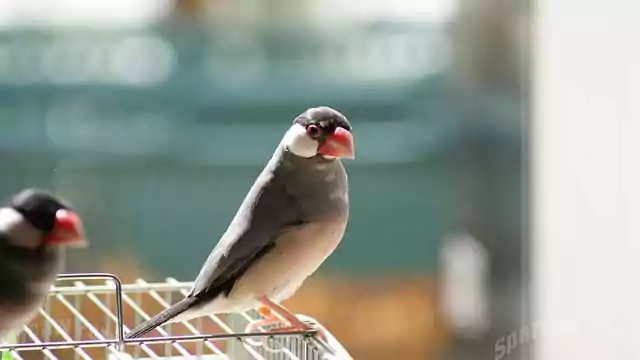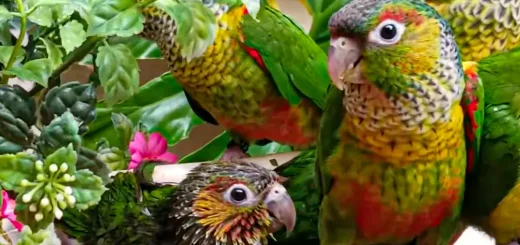Java Sparrow Finch Bird Species – profile

Contents:
Common names
Scientific name
Origin and history
Volume
Average lifespan
The mood
Java Finch colors and markings
Care for Java sparrow Finch
Java Finch Feeding
Exercise
More pet bird species and more research
Small, beautiful, and cool, adorable Java sparrow has been popular as a cage and bird for many years. These birds require a “hands-off” approach to bird ownership, so they are often described as an excellent choice for both young and old bird owners who want a caring bird.
Java sparrow Finch has a very quiet vocabulary with a signature chip-chip-chip song and they are best kept with pairs or other birds. Their elegant in-cage flight maneuvers help to keep and nurture their most attractive little birds.
Common names
Java Fin, Java Rice Fin, Java Sparrow, Java Temple Birds, Paddy Birds
Scientific name
Launcher Origivora (Some scientists place Java Finn and Timor Sparrow on separate pads, so the fin can be seen under the scientific name Pada Orizivovar.)
java sparrow Origin and history
As the name implies, Java sparrow Finch is native to the Indonesian archipelago, which includes Java, Bali, and Bawan. Be that as it may, they have been acquainted with different regions, so the winged creatures can be found in Sri Lanka, Hawaii, Jamaica, and Puerto Rico. In Java, Java fink is a vulnerable species.
These Asiatic Finns usually live in large flocks on grasslands and savannas. Birds have also found a love for the farming field, especially for those growing rice. In most of its native islands, the species is seen as an insect. In some areas where they are not native, even for fear of the local population, birds are prohibited as pets.
Volume
Java finches are little winged animals, averaging just 5 to 6 crawls long from the nose to the tips of the tail plumes. Due to their compact size, they have limited space and have become a very popular pet bird among those who cannot house a large bird species.
Average lifespan
When properly cared for in captivity, the Java Finches have been known to survive for 10 years. On average, however, they live for less than 5 years. Some individuals have been reported living in their late teens.
The mood
Java Finch is a little bird of social, but often too scary for direct human interaction. Some pet owners have reported success in bonding with their finances, though. Typically, they grow in pairs or small sheep kept in a flight cage.
If you are thinking about adopting Java Finch, you can prepare yourself to accept at least two or three. These birds should not be kept as exclusive pets and would be very depressing without any other fins to keep them company.
Past that, these winged creatures hush up, latent, and non-forceful. They can be kept with other finches, both large and small without problems. A pair of Java can be a nice addition to a different aviary. The only time to show aggression is usually between the two men in JavaScript, even if it is minimal.
java sparrow Finch colors and markings
The natural color of the java fin includes a gray back and a black head and tail feathers. They have gray-cinnamon-colored breasts and belly, and large white patches on their cheeks. Some people say that they remind their little penguins.
Another distinctive feature of the Java fins is the thin orange ring around their eyes. They have bright red-orange beaks and bright orange skin on their legs and feet.
Both males and females of the species exhibit the same color on their pumps. There are ways to do that without sex, though this is not easy without comparison. For example, the male has darker eyes and slightly wider, sparkling seeds that swell to the top during the breeding season.
The best way to have this fun sex is to find out who is singing. Even though women make calls, only men have to sing. It can take a long time for a male to sing, though some birds say that after a week of isolation, most will. It can also be difficult if you have a group of fins, but this can be done with careful attention and banding.
Various color mutations of Java Finch are also available in the pet trade. These include Pied Java, Agata Java, Black Head Java, Cinnamon or Phone Java, Cream Java, Dark Silver and Light Silver Java and White Java.
Care for java sparrow Finch
If you are interested in keeping Java Finches as pets, it is important to do research as soon as possible and learn all you can about these little birds. They are known to be very difficult species and rarely get sick if properly cared for. Nevertheless, it is good to know a lot more about their caregivers than the slightest.
Before bringing a pair or a small herd home, talk to local breeders and combine their tips on how to provide the best home environment for them. You may even want to consider joining your local Aviature Society or a bird club, so you can learn from other members’ experiences.
The cage needed for Java finches should be large enough to allow for the flight and depending on how many birds you decide to keep. Usually, a tall cage about 7 feet high will give them plenty of room.
If you do not want to breed birds, an atheist box is not necessary. Provide nails, stairs, swings and lots of toys to keep them happy. They enjoy bathing, so a dish of water for this purpose would be greatly appreciated.
Java finches are filigree breeders and will do so all year long except when it gets too hot or too cold. If you want to keep a non-breeding aviary, the best bet is to get same-sex pairs. As an alternative, Finch Aviary recommends nesting boxes or any egg removal. To ensure that your female does not endanger her health by replacing “lost eggs”, you can use fake eggs as a decoy.
java sparrow Finch Feeding
Although these birds have become famous for eating rice in the wild, Javascript java finches prefer to eat good, high-quality seed mixes. Many Java Fin owners successfully report that they are formulated for parakeets rather than finches. They will pick any seeds they don’t want and leave a significant mess, so it is important to adapt to what they can eat.
For balanced nutrition, their diets should be supplemented with nuts, grains, and finely chopped, fresh bird-safe fruits and vegetables. Your bird will also enjoy crushed eggs or oyster shells, which provide extra calcium. Most Java cut bones are not preferred.
Exercise
Like all fink species, these are highly active little birds who seem to have endless energy. Because of this, and since they do not tolerate human handling, they should be provided with a high flight cage, so they should fly, play, climb, jump and exercise.
This creates suitable pets for birds that do not have enough time to bond and is approached by a parrot or other bird because they do not have time to play the cage. As long as other birds and plenty of activities are provided, they are great for entertaining themselves.
More pet bird species and more research
Zebra Finches bird
Thanks For Visit.








